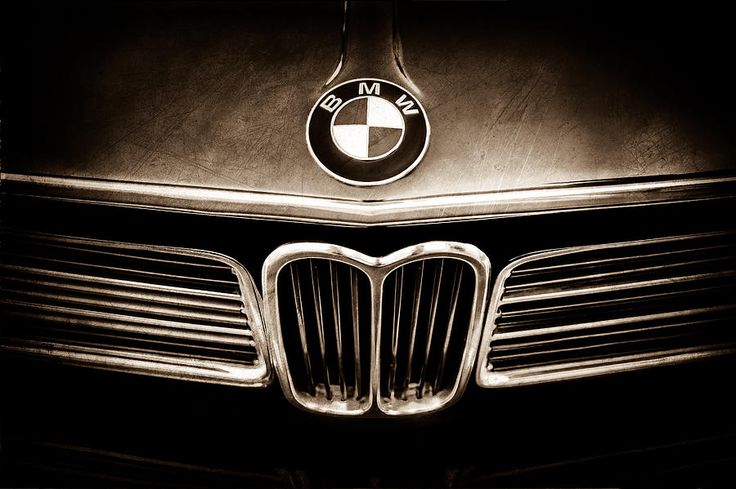BMW has been one of the well-known car manufacturers all over the world. It is respected and acknowledged for its quality manufacturing, innovativeness, and outstanding performance. Therefore, it has made its name in the international automobile sector that can never be forgotten. From producing aircraft engines to now being a major luxury cars and motorcycles manufacturer, there are many significant events that mark BMW’s journey characterized by achievements and challenges.
This article delves deep into the history and legacy of BMW, exploring the key events, innovations, and cultural impact that have shaped the brand into the global powerhouse it is today.
Early Beginnings: The Formation of BMW
BMW was officially founded in 1916, but its origins date back even earlier. Initially, the company was involved in the production of aircraft engines. In fact, BMW’s iconic roundel logo, which resembles a spinning aircraft propeller, pays homage to these aviation roots.
Aircraft Engine Manufacturer (1916-1918)
The company began as “Bayerische Flugzeugwerke” (Bavarian Aircraft Works) in Munich, Germany. It was only later, in 1917, that the company was renamed Bayerische Motoren Werke, or BMW, as we know it today. During World War I, the demand for aircraft engines fueled BMW’s early growth, and the brand quickly gained a reputation for engineering excellence. The German Air Force used BMW engines extensively, making the company a key player in the aviation industry during this period.
However, after Germany’s defeat in World War I, the Treaty of Versailles prohibited the production of aircraft in Germany. This forced BMW to diversify and shift its focus away from aviation.
Moving to Motorcycles and Automobiles (1920-1930s)
After World War I, BMW ventured into motorcycle production. In 1923, the company introduced its first motorcycle, the R32. It featured an innovative flat-twin boxer engine and shaft drive—two hallmarks that still define BMW motorcycles today. The success of the R32 paved the way for BMW’s growth in the motorcycling world.
In 1928, BMW made its first foray into automobile manufacturing when it acquired the Eisenach car plant, where small cars were produced under the “Dixi” brand. The Dixi 3/15 was BMW’s first car and was based on the British Austin 7. This marked the beginning of BMW’s automobile production, setting the stage for future success.
BMW in World War II: The Rise and Fall
During World War II, BMW once again became heavily involved in the production of aircraft engines. The company produced engines for German fighter planes, including the iconic BMW 801 radial engine, which powered the Focke-Wulf Fw 190 fighter aircraft.
While BMW thrived during the war, the company’s involvement in the Nazi war effort led to significant repercussions post-war. Allied forces bombed BMW’s factories, and the company was forbidden from producing automobiles or aircraft engines as part of the post-war reparations. BMW faced bankruptcy and uncertainty during this period.
Post-War Rebuilding: The 1950s and 1960s
After the devastation of World War II, BMW found itself at a crossroads. With most of its factories destroyed and its involvement in aviation restricted, BMW had to pivot once again. During the late 1940s and early 1950s, the company resumed motorcycle production and began developing new automobiles.
The Bubble Car Era
In the mid-1950s, BMW introduced the Isetta, a tiny, bubble-shaped microcar. The Isetta was licensed from the Italian firm Iso, and it helped BMW stay afloat during a financially precarious time. Although the Isetta was a commercial success, it wasn’t enough to fully revitalize the company’s fortunes.
By the late 1950s, BMW was struggling to stay solvent. The company’s financial difficulties were so severe that there was serious consideration of a takeover by Daimler-Benz. However, BMW shareholders resisted the takeover, and a new era of leadership and innovation soon emerged.
The New Class: BMW’s Revival in the 1960s
The turning point for BMW came with the introduction of the “Neue Klasse” (New Class) models in the 1960s. These compact, sporty sedans, such as the BMW 1500, 1600, and 2002, featured advanced engineering, performance, and design that would become BMW’s hallmark for decades to come.
The New Class models not only saved the company but also laid the foundation for BMW’s reputation as a producer of sporty, driver-focused vehicles. The success of the New Class cars led to the development of BMW’s legendary 3 Series in the 1970s, further cementing the brand’s status as a leader in the luxury car market.
The BMW 3 Series: A Global Icon
Introduced in 1975, the BMW 3 Series has become one of the most successful and iconic models in automotive history. Combining luxury, performance, and cutting-edge technology, the 3 Series quickly gained a loyal following among driving enthusiasts and cemented BMW’s reputation for creating the “ultimate driving machine.”
The success of the 3 Series led to the development of other successful model lines, including the 5 Series and 7 Series, which helped BMW expand its presence in the executive and luxury sedan markets. Over the decades, the 3 Series has remained a symbol of BMW’s commitment to innovation and performance.
Technological Innovations and Motorsport Legacy
BMW has always been at the forefront of automotive innovation. The company was an early adopter of advanced technologies, including turbocharging, lightweight construction, and efficient engine designs. These innovations helped BMW remain competitive and consistently deliver vehicles that combine performance and efficiency.
In addition to its technological prowess, BMW’s involvement in motorsports has played a key role in its legacy. The company has competed in a wide range of motorsport events, from Formula 1 to endurance racing. BMW’s Motorsport division, known as BMW M, has produced some of the most iconic high-performance cars, such as the BMW M3 and M5. These vehicles bring race-proven technologies to the streets, offering consumers a taste of motorsport performance in everyday driving.
Expanding the Portfolio: SUVs, Electric Vehicles, and More
In the late 1990s and early 2000s, BMW expanded its portfolio to include sport utility vehicles (SUVs) with the introduction of the BMW X5. The success of the X5 was followed by the introduction of other X models, including the X3, X1, and X7, catering to the growing demand for luxury SUVs.
BMW has also embraced the future of electric mobility with its BMW i sub-brand. The BMW i3 and i8 models, introduced in the 2010s, represent the company’s commitment to sustainable mobility and cutting-edge electric and hybrid technologies. In recent years, BMW has expanded its electric vehicle offerings, with models like the iX and i4 leading the charge toward a greener automotive future.
BMW Today: A Global Leader in Luxury and Innovation
Today, BMW is a global leader in the luxury automotive market, with a reputation for building high-quality, performance-oriented vehicles. The company’s commitment to innovation, design, and sustainability ensures that it remains a key player in the rapidly changing automotive industry.
BMW continues to push the boundaries of what’s possible in terms of performance, design, and technology. From the development of autonomous driving systems to the expansion of its electric vehicle lineup, BMW is shaping the future of mobility while staying true to its legacy of engineering excellence.
Conclusion: BMW’s Enduring Legacy
BMW’s journey from a small aircraft engine manufacturer to a global leader in the automotive industry is a testament to the company’s resilience, innovation, and commitment to excellence. Over the course of more than a century, BMW has weathered challenges, embraced change, and consistently delivered vehicles that inspire passion and excitement among drivers around the world.
As BMW continues to evolve, it remains dedicated to its core values of performance, luxury, and innovation. Whether it’s through the latest electric vehicle technologies or high-performance sports cars, BMW’s legacy will undoubtedly continue to shape the future of the automotive industry for years to come.







